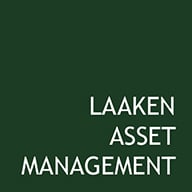China remains an important yet uncertain factor for the world’s economy. The country faces significant demographic challenges from its former one-child policy, whereby the population is aging at a comparatively rapid pace versus other countries. This results in an increasing amount of pressure on the working population to support a growing number of retirees.
The Chinese real estate sector is showing signs of overcapacity, largely caused by years of concentrated investment from private savers. The resulting decline in real estate prices has negatively affected the banking and construction sector and is slowing down consumer spending.
Despite these challenges, there are positive signs. The Chinese government has announced a large stimulus package. Recent financial market performances and commodity prices both offer encouragement. Average growth expectations for 2025 are held at 4.5%, which is a robust figure compared to most other countries, but below trend for the country.
United States: Consumer spending and monetary policy
The American consumer spending, responsible for 18% of global economic activity, is showing signs of slowing down after a period of high growth in 2024. The increase in credit card debt and the growing number of payment delinquencies feed the fears surrounding the stability of spending in 2025. Given the high level of public debt, sizeable additional fiscal stimulus measures seem unlikely. The market has incorporated these factors into a moderate growth forecast of 1.8% for 2025. The Federal Reserve, despite an inflation rate above 2% and historically low unemployment, has initiated expansionary monetary policy with its recent 0.5% rate cut to 5%. Further cuts are expected to stimulate economic growth.
Europe: Economic restructuring and hurdles to growth
Europe’s share of global economic activity has fallen from 20% to 14% in recent years. In response, the EU appointed former central bank president Mario Draghi as an advisor, who presented 150 recommendations to revitalise the European economy. With low investment growth and stagnant consumer spending, Europe is expected to see modest growth of 1.3% in 2025. The European Central Bank, in line with the Federal Reserve, also cut interest rates by 0.5% to 3.5%.
Earnings growth estimates and market valuations
In contrast to the subdued economic growth outlook are strikingly positive earnings average growth forecasts for listed companies. An earnings per share growth of 12% is expected for the MSCI China index, 16% for the S&P 500, and 9% for the Eurostoxx 600.
This contrast can be partly explained by:
- Earnings growth is a nominal figure, while economic growth is adjusted for inflation. Inflation in these regions is between 2-3%.
- Share buybacks, particularly popular in the US, increase earnings per share. For the S&P 500, the “buyback return” is about 2%.
- Companies realise higher profit margins through economies of scale and automation, a trend expected to continue.
Conclusion and outlook
Expected earnings growth is significantly higher than underlying economic growth across regions, even when one accounts for the factors above. These earnings growth expectations have led to higher equity valuations, especially in the US where the P/E ratio is above average.
Markets anticipate further interest rate cuts of more than a percentage point in both the US and Europe over the next 12 months, despite core inflation remaining above central bank targets. These factors contribute to a complex economic landscape for 2025, where careful navigation and continuous evaluation will be crucial for investors and policymakers.
Fixed income – Interest rates fell in response to decreasing inflation and implemented central bank rate cuts. We remain cautious about interest rate risk as the premium for longer maturities is not attractive and a sharp expected fall in interest rates is already priced in by financial markets. Recent purchases are characterized by longer maturities to maintain average maturity. We prefer investment grade corporate bonds to government bonds because of the attractive premium.
Equities – We have reduced the equity weighting, but remain invested in equities at neutral to slightly underweight levels. The aforementioned high valuation of equity markets is strongly supported by shares of a concentrated number of very large individual companies. We are confident that the equity selection in the Laaken portfolios has an acceptable valuation for the growth it can achieve. The recent addition of TD SYNNEX, discussed below, is an example of a well-positioned company trading at an attractive valuation.
Precious metals – This asset class has achieved the highest returns year-to-date. The gold position has increased in percentage terms due to market movements; this heightened allocation is maintained as insurance for ongoing geopolitical risk.







